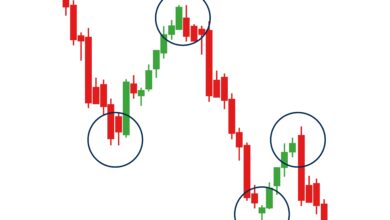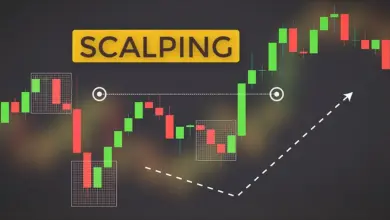Position Trading 101: A Comprehensive Guide for Long-Term Investors

Position trading is a long-term investment strategy where traders hold assets for extended periods, ranging from several months to years, to benefit from significant price movements. Unlike day traders or swing traders, position traders focus on the broader market trends, avoiding short-term fluctuations. This guide will help you understand the basics of position trading and how to apply it effectively as a long-term investor.
1. What Is Position Trading?
Position trading involves buying and holding securities with the goal of capitalizing on major shifts in the market. Investors using this strategy are less concerned with daily or weekly price swings and more focused on the long-term growth potential of their investments. They analyze fundamental factors, such as the overall economy, company performance, and industry trends, to make informed decisions.
Key Features of Position Trading
- Long-term approach: Holding assets for months or even years
- Focus on fundamental analysis: Examines a company’s financial health and market conditions
- Less frequent trading: Minimal transactions, with an emphasis on patience
2. How Position Trading Works
Position traders base their decisions on macroeconomic trends, company performance, and industry outlooks. They typically enter trades when they identify an undervalued asset and hold it until they believe it has reached its full potential. Unlike active traders, position traders ignore daily market noise and instead look for significant shifts in market conditions that could result in large price movements over time.
Steps for Position Trading
- Identify an Opportunity: Analyze long-term trends using fundamental data and market research.
- Buy and Hold: Once you’ve found a promising investment, buy and hold the asset for the long haul.
- Monitor the Market: Keep track of the broader market, but avoid reacting to minor price changes.
- Exit When the Time is Right: Sell when the asset has reached its target price or when market conditions indicate a significant change.
3. Key Tools for Position Trading
Successful position traders use a variety of tools to guide their decisions. While fundamental analysis is at the core of this strategy, technical analysis can also play a role in determining optimal entry and exit points.
- Fundamental Analysis: This involves examining a company’s financial statements, earnings reports, and macroeconomic factors to assess long-term potential.
- Moving Averages: A technical tool that helps traders determine the general direction of the market over time. Position traders typically rely on longer moving averages, such as the 200-day moving average, to confirm trends.
- Support and Resistance Levels: These are price points where an asset tends to reverse direction. Understanding these levels helps position traders identify when to buy or sell.
- Economic Indicators: Factors such as interest rates, inflation, and GDP growth are important for understanding the market environment.
4. Benefits of Position Trading
Position trading offers several advantages, particularly for long-term investors looking to build wealth over time.
- Lower Stress: Since you’re holding assets for the long term, there’s no need to constantly monitor the market. Short-term volatility becomes less relevant.
- Potential for Large Gains: By holding positions through market cycles, you can capture significant price movements that would be missed by day or swing traders.
- Less Time-Consuming: Fewer transactions mean less time spent trading and more time focusing on long-term strategies.
- Reduced Transaction Costs: With fewer trades, position traders incur lower transaction fees compared to more active trading strategies.
5. Risks of Position Trading
While position trading can be profitable, it’s not without risks. The key risks include:
- Market Downturns: Holding assets during market corrections or downturns can result in significant losses if not managed carefully.
- Patience is Required: This strategy requires a long-term view, and traders must be prepared to wait for their positions to reach their potential. Impatient investors may struggle with this approach.
- Overconfidence in Trends: Long-term trends can sometimes reverse unexpectedly, especially due to macroeconomic or geopolitical factors.
6. Best Markets for it
Position trading works well across various financial markets. However, some markets are more suitable due to their long-term growth potential and stability.
- Stock Market: Position trading in large-cap stocks allows investors to benefit from corporate growth over time. Stocks of well-established companies often follow predictable trends, making them ideal for long-term strategies.
- Commodities: Markets like gold, oil, or agriculture products can offer long-term growth opportunities based on supply and demand trends.
- Forex Market: Position traders in forex can hold currency pairs for months or years, capitalizing on long-term economic trends and interest rate differentials between countries.
7. Creating a Position Trading Strategy
A successful position trading strategy combines patience, solid research, and a disciplined approach to market trends. Here’s how you can develop a strong strategy:
- Set Long-Term Goals: Determine what you want to achieve with your investments, whether it’s capital growth, dividend income, or another goal.
- Choose the Right Assets: Focus on industries or companies with long-term growth potential and stability.
- Develop Risk Management Rules: Always set a stop-loss to protect against unexpected market movements. Position traders typically use wide stop-loss orders to account for normal fluctuations.
- Be Patient: Stick to your plan and avoid getting swayed by short-term volatility.
- Review and Adjust: Periodically review your positions to ensure they still align with your long-term goals.
Frequently Asked Questions (FAQ)
Q: How much capital do I need for position trading?
A: The amount of capital needed depends on your investment goals and the markets you’re trading. However, position traders typically start with larger sums to hold positions for extended periods.
Q: How long should I hold a position?
A: A typical position trade lasts anywhere from several months to years. The duration depends on the asset’s performance and the market conditions.
Q: Is position trading suitable for beginners?
A: Yes, position trading is ideal for beginners who prefer a low-maintenance, long-term strategy. It allows new investors to focus on research and fundamentals rather than frequent trades.
Conclusion
Position trading is an effective long-term strategy for investors looking to build wealth over time. By focusing on fundamental analysis, managing risks, and maintaining a disciplined approach, position traders can benefit from major price movements in the market. Whether you’re new to investing or looking for a less stressful way to manage your portfolio, position trading offers a comprehensive path to long-term financial success.





